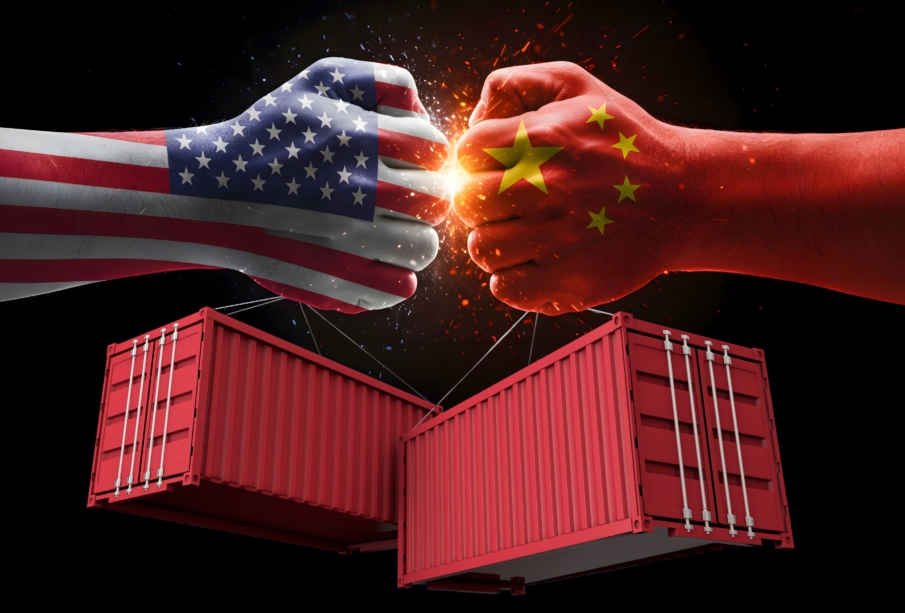When tariffs rise and international relations tense, many businesses feel like ships trapped in a violent storm.
Today’s global trade tensions, especially between China, the U.S., and Europe, have created uncertainty, rising costs, disrupted supply chains, and fragile market confidence.
But history teaches us a critical truth:
Businesses that adapt, innovate, and think globally not only survive these storms — they emerge stronger, leaner, and more dominant than ever.
If you’re a business owner wondering how to navigate these turbulent waters, this guide will give you a proven survival and growth blueprint.
Understanding the Trade War Landscape
Trade wars are triggered when countries impose tariffs or other barriers on each other’s goods and services, often in response to economic disputes or geopolitical tensions. The current standoff between China, the United States, and Europe is about more than just tariffs — it’s about technological dominance, intellectual property rights, manufacturing leadership, and shifting alliances.
These dynamics create ripple effects that touch every business, not just multinational giants. From sourcing raw materials to selling finished goods, tariffs raise costs, disrupt delivery times, and shift customer demand.
In this environment, the old ways of doing business no longer guarantee success. Adaptability is the new competitive advantage.
1. Diversify or Die: Spread Your Supply Chains
Depending on a single country or supplier is like standing on one leg during an earthquake.
One hard lesson from the early stages of the China-U.S. trade war was that overreliance on Chinese manufacturing created vulnerabilities companies could no longer afford.
Solution:
Smart businesses are diversifying their supply chains, sourcing from multiple regions like:
- Vietnam: Fast-rising as a manufacturing hub for electronics, textiles, and furniture.
- Mexico: A key nearshoring partner for U.S. businesses, benefiting from USMCA agreements.
- Poland and Eastern Europe: Emerging manufacturing hubs for the European market.
- Bangladesh and India: Growing players in apparel, technology, and services.
Case Study:
Apple Inc. announced plans to shift part of its production to India and Vietnam, reducing dependency on Chinese manufacturing. This move was strategic, ensuring resilience against future tariffs and political risks.
Takeaway:
Don’t wait until you’re squeezed. Start building relationships with alternative suppliers now, even if you don’t immediately switch production.
2. Rework Your Pricing Strategy
Tariffs almost always mean higher operational costs — but slapping a steep price hike onto your customers’ bills isn’t a smart long-term strategy.
The winning formula? Strategic pricing.
Here’s how:
- Introduce premium product versions with added features or services, justifying higher prices.
- Bundle products to increase perceived value without dramatically raising prices.
- Implement incremental price increases over time, communicating openly about the necessity due to external pressures.
Real-world Example:
Luxury fashion brands like Louis Vuitton and Hermès raised prices slightly across multiple regions during trade tensions, framing it around “material costs” and “exclusive craftsmanship” rather than “tariffs.” Customers accepted it because of the perceived value.
Takeaway:
Don’t hide price adjustments. Frame them transparently around rising global costs while emphasizing your brand’s enduring value.
3. Unlock New Markets Beyond Traditional Boundaries
In a trade war, markets you once considered “safe” can become volatile overnight. Meanwhile, emerging economies are booming, presenting fresh opportunities for expansion.
Promising markets include:
- Africa: Young population, rising internet penetration, rapid urbanization.
- Southeast Asia: Countries like Indonesia, Philippines, and Malaysia are becoming major consumer markets.
- Latin America: Demand for quality goods and services is surging amid growing middle classes.
Real-world Example:
Coca-Cola doubled down on African expansion when tensions rose between China and the U.S., tapping into rapidly growing urban populations thirsty for branded products.
Takeaway:
Expand your horizons. Emerging markets are not just fallback plans — they could be your next major growth engines.
4. Manufacture Closer to Home: Embrace Nearshoring
Long global supply chains are fragile during trade wars and pandemics. Transportation delays, border closures, and sudden regulatory changes can bring business to a standstill.
Solution:
Nearshoring — shifting production closer to the target market.
Benefits include:
- Lower transportation costs.
- Faster response times to market demand.
- Reduced exposure to tariffs.
- Enhanced brand perception for “locally made” products.
Case Study:
Ford Motor Company invested heavily in North American production, shielding itself from disruptions linked to Asia and European tariffs.
Takeaway:
Shorter supply chains equal fewer risks. If feasible, start moving production closer to your primary markets.
5. Differentiate or Disappear: Innovate Your Offerings
In a commoditized market, being the cheapest option is no longer a reliable strategy during trade wars. Margins shrink, costs rise, and competitors race to the bottom.
Solution:
Stand out. Offer unique value that customers can’t easily substitute.
Ways to differentiate:
- Offer eco-friendly, sustainably made, or ethically sourced products.
- Create customizable products.
- Focus on design, durability, or innovation as a selling point.
- Protect your innovations through patents or trademarks.
Real-world Example:
Tesla created an electric car brand that’s as much about status and innovation as it is about transportation. As a result, Tesla can command higher margins even in turbulent times.
Takeaway:
Innovation shields you from price wars and creates customer loyalty that tariffs can’t shake.
6. Stay Politically Savvy and Legally Alert
Trade wars are political battles first, economic skirmishes second. Regulations, sanctions, and tariffs can change literally overnight.
Smart move:
- Join industry associations and lobbying groups.
- Build relationships with local policymakers and trade groups.
- Monitor government announcements and trade policies closely.
Real-world Example:
When U.S. companies like Qualcomm and Intel faced export bans on selling technology to Chinese firms, those with diversified customer bases or political connections suffered less.
Takeaway:
Stay alert. Businesses with early insights adapt faster — and get a critical head start.
7. Build Emotional Bonds with Your Customers
When uncertainty rules, emotional loyalty becomes a powerful anchor.
People crave stability, trust, and connection during global instability.
How to build stronger bonds:
- Share your brand story authentically.
- Engage customers on social media with transparency and humanity.
- Support social causes that align with your audience’s values.
- Offer loyalty programs or exclusive communities.
Real-world Example:
During the COVID-19 disruptions (which paralleled some trade war effects), brands like Nike pivoted to motivational messaging (“You Can’t Stop Us”) that resonated deeply with customers, boosting loyalty even when sales temporarily dropped.
Takeaway:
Products may fluctuate, but emotional bonds create lifetime customers.
8. Protect Against Currency Fluctuations
Trade wars often trigger volatile foreign exchange (FX) markets.
A 10% swing in the dollar, yuan, or euro can obliterate your profits if you’re not protected.
Solutions:
- Lock in rates with forward contracts.
- Diversify your revenue streams across different currencies.
- Work with global finance consultants for currency risk management.
Takeaway:
Smart financial planning protects you from currency shocks that many competitors won’t see coming.
9. Digitize Operations: Your Future Is Online
If your business isn’t digital-first yet, you’re running out of time.
Trade disruptions affect physical shipments, but digital delivery is unstoppable.
- Sell through e-commerce platforms.
- Offer virtual services, digital consultations, online learning.
- Automate inventory management, logistics, and marketing.
Real-world Example:
Alibaba helped thousands of Chinese small businesses pivot to digital sales and live-stream selling when global exports slowed, turning crisis into opportunity.
Takeaway:
If borders close, your digital doors must still be wide open.
10. Stay Lean, Agile, and Ready to Pivot
Trade wars teach a brutal but invaluable lesson:
Rigidity kills businesses. Flexibility fuels survival.
Keep operations lean:
- Avoid excessively long-term contracts.
- Stay ready to change suppliers, routes, or even products.
- Embrace a culture of experimentation and rapid decision-making.
Real-world Example:
Clothing brands like Zara famously run agile production cycles, allowing them to switch product lines in weeks, not months. This speed protects them from supply chain shocks better than slower competitors.
Takeaway:
Be a speedboat, not a tanker. Stay fast, flexible, and fearless.
Trade Wars Are Not Endings —They’re Beginning
Global trade wars are tests. They test resilience, creativity, strategy, and courage.
Many companies will fold under the pressure, but many more will be born from it, sharper and more capable than before.
The businesses that will thrive are those that:
- Diversify boldly.
- Price smartly.
- Innovate fearlessly.
- Communicate authentically.
- Digitize aggressively.
- Stay lean and agile.
The real question is
Will you let this moment paralyze you… or propel you into your greatest chapter yet?
The future belongs to those who don’t just weather storms — they dance in the rain.

